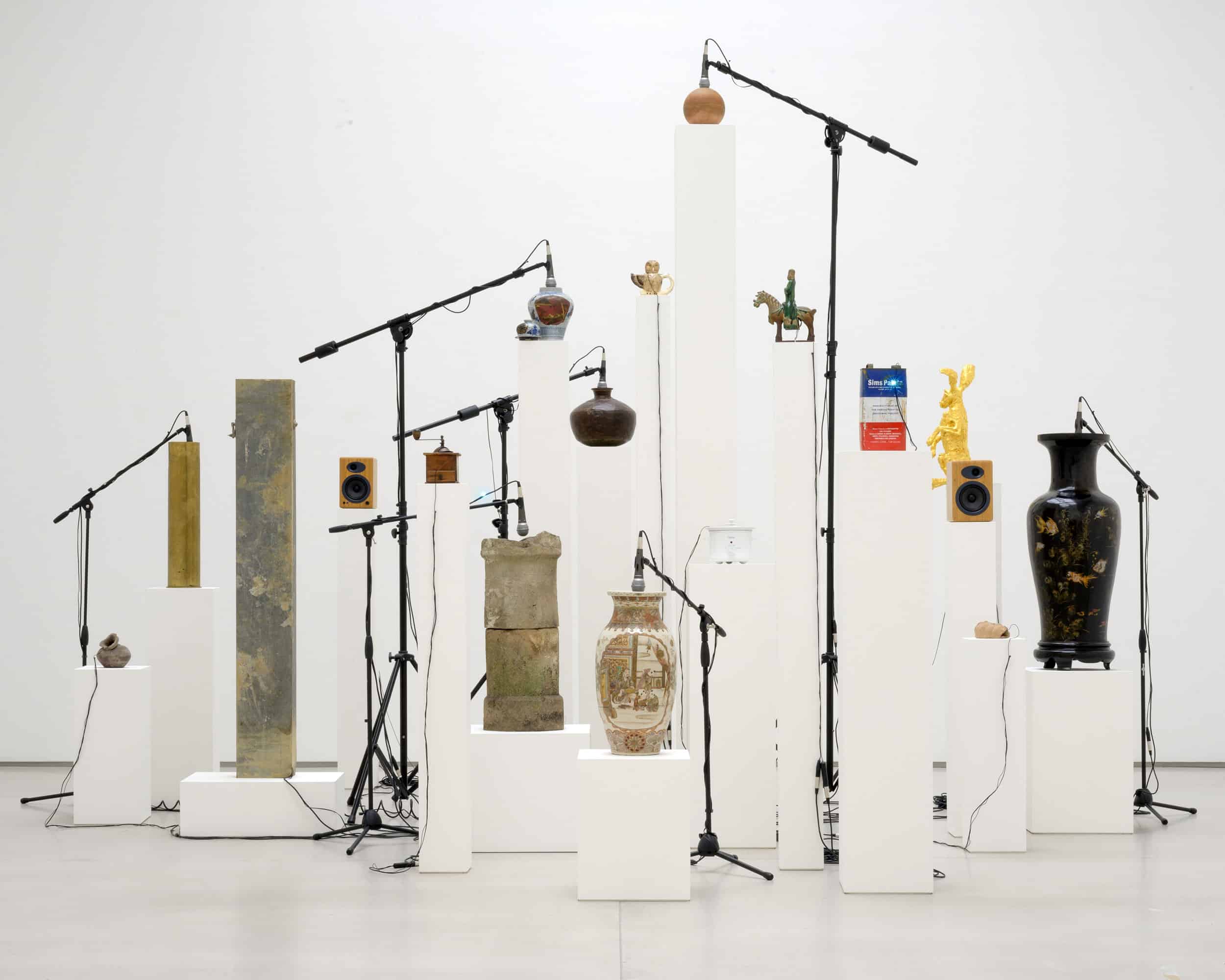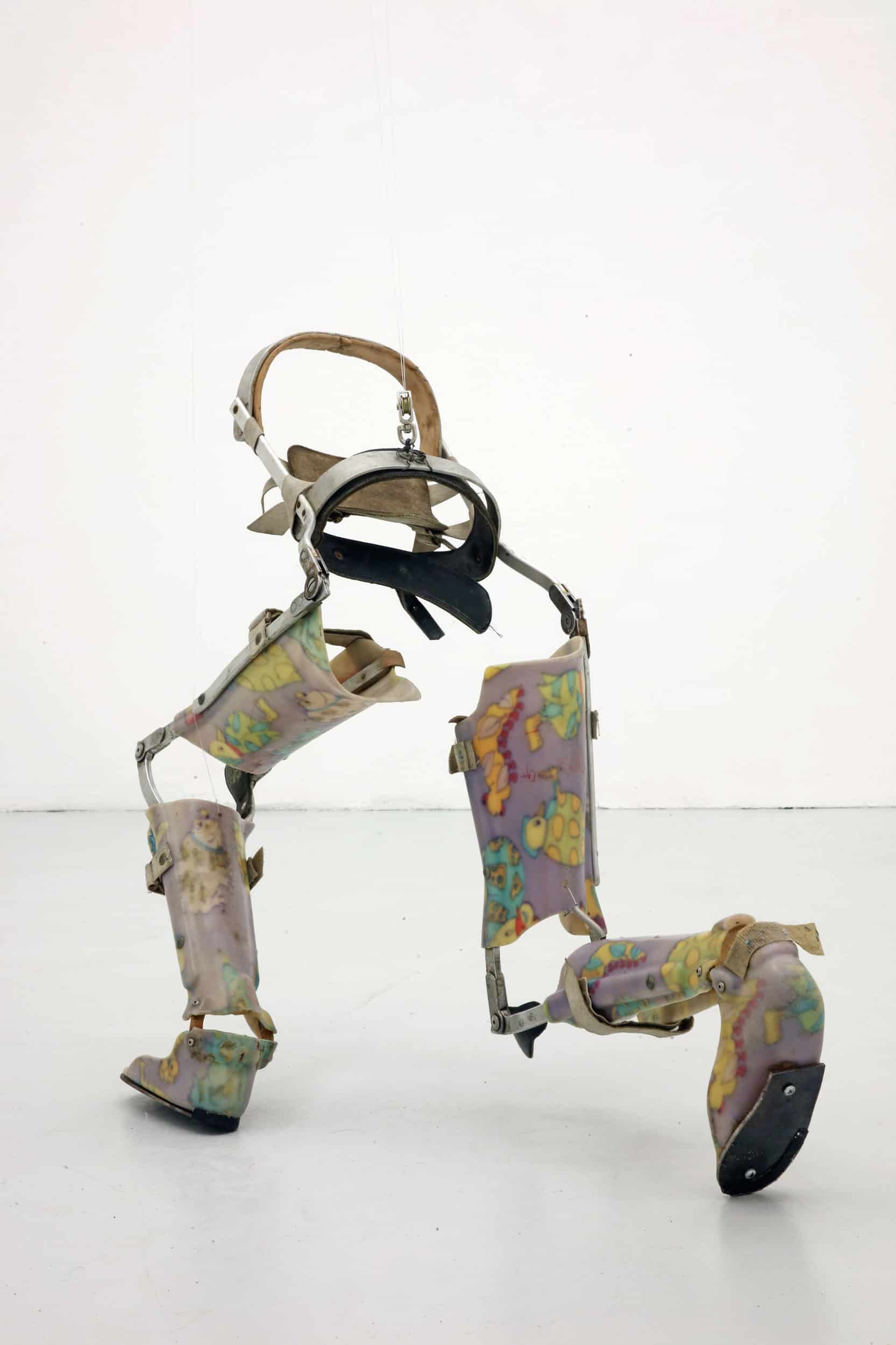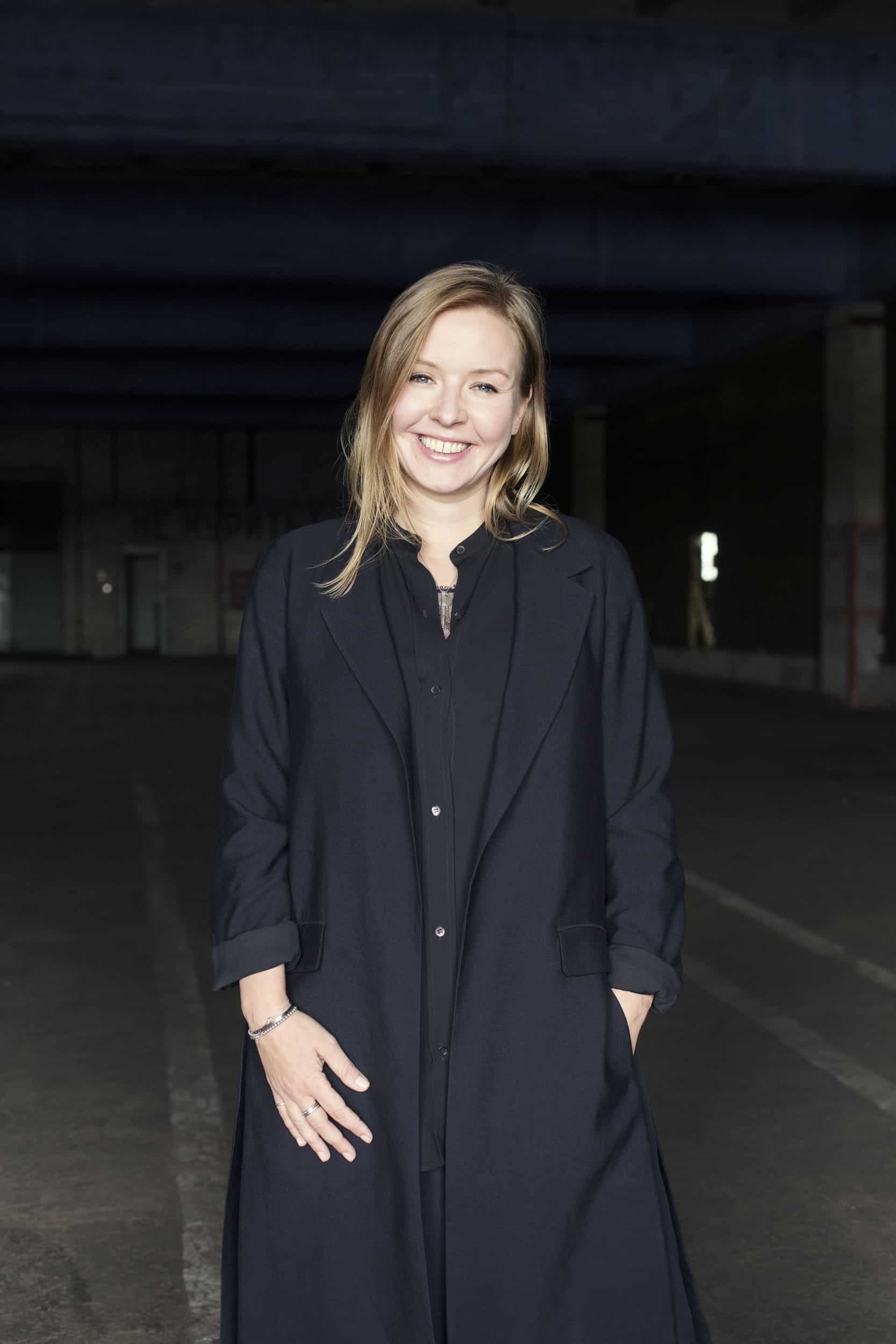RIBOCA2 venue Andrejsala, photo by Andrejs Strokins
The Riga International Biennial of Contemporary Art (RIBOCA) founded in 2016, focuses heavily on the rich traditions and history of Riga and the landscape of the Baltic states as a whole. ‘And suddenly it all blossoms’ is the title of this year’s edition, overlooked by the former curator of the Palais de Tokyo, Rebecca Lamarche-Vadel. Cooperation between artists and their local surroundings and communities is a key element of the work displayed during the Biennale. This year 85% of artworks are the new commissions, and almost all of them are being produced in Latvia.
RIBOCA was supposed to open in May but as many similar events, due to the COVID-19 virus, it has to be postponed. The new dates and programme have been announced (20 August – 13 September 2020). Ahead of the opening, we speak to the organisers – Agniya and Anastasia about the beginnings and what makes Baltic artists so unique. We also discuss the challenges of organising the festival in the light of the pandemic with all the obstacles that the whole team had to face while rethinking the new formula of the RIBOCA.
Agniya Mirgorodskaya, photo by Karlina Vitolina
Anastasia Blokhina, photo by Kristine Madjare
Sylwia Krason: This year RIBOCA celebrates its second edition. How did you come up with this original idea? Has the festival’s formula evolved in any way since it all started?
Agniya Mirgorodskaya: Having been exposed to International Art events all over the world, as well as closely observing the art scene while working in London and New York, I have noticed that Baltic artists have been underrepresented, almost absent even. Due to my personal interest and fascination with art produced by Baltic artists, as well as having roots in Lithuania, I felt that it was in my power to change this situation. Hence, the idea of founding the Art Biennial in the Baltics came about. Riga is a very multi-layered and complex place, where many histories and narratives overlap, which can be very much felt in its architecture and mental landscape. Being intrigued by it, Riga felt like the right place for the Biennial to take place. As for the formula, it remains the same. I would say that the main principles are still trusting intuition and getting genuine and passionate people on board. We are not trying to chase trends, but rather respect the locality we are operating in and giving a chance for the artists to experiment while being provided with the best conditions.
SK: RIBOCA is an international biennial with a European focus. How did the forming of the core team look like and how broad/international is it? How many people tirelessly are working behind the scenes of RIBOCA?
Anastasia Blokhina: Back in 2016 when Agniya invited me to build the joint foundation first and foremost together we of course started forming the team. Initially it was just the four of us – Agniya, myself and Olga Sivel from Saint Petersburg and Inese Dabola from Riga. Then gradually we’ve started building a team of researchers, producers and other people who tirelessly work behind the scenes. Our production team is mainly from Riga, both Russians and Latvians, as well as administration and communication. The core team consists of 10 people and extends significantly closer to the opening of each edition.
This year our curator, Rebecca Lamarche Vadel is French, public programmes curator Sofia Lemos is Portuguese, designer Manuel Burger is from Germany, our architects Rolnad Reemaa and Laura Linsi are from Estonia, but based in London. Our working language is English but you can hear a lot of Latvian, Russian, French and many other languages as well.

RIBOCA2 venue Andrejsala, photo by Elena Kononova
SK: What are the criteria for choosing a chief curator and curatorial team?
AM: The Biennial has been set up with an idea to experiment but also to have distinguished curators with a strong independent curatorial voice to curate its editions. Therefore, together with our advisory board, we are looking very broadly across different geographies, ages and standpoints. It is crucial for us to have a curator who would be willing and able to dedicate a significant amount of time on the project, making it hers/his absolute priority. Spending considerable time in Riga immersing themselves in the local scene with all its complexities and sensitivities are seen as essential.
SK: Do you think that it is important to know the context in order to understand art as such? How do you deliver the art message to your audience?
AB: Well of course context is important but what needs to be also mentioned is the importance of regional context and the significance of research and communication. As a biennial we try to work with artists on the new commissions as much as we can and there is always a very profound research behind – from the interaction of spider species from different regions to history of shamanism and many other interesting things. And then comes the bigger task – how do you explain the work of an artist to a 9-year old and his grandmother? How do you encourage them to come to see the exhibition in the first place?
We work with education programmes all year long. One of the most cherished initiatives is Teacher’s day that we do twice a year – we invite teachers from all over Latvia and explain to them what we do, tell them about the artists and the concept of each biennial so they can explain to their pupils.
We also pay a lot of attention to training of the mediators for each edition and we always have daily free tours with mediators. It’s important to mention that we work in all three languages – Latvian, English and Russian to make sure that the audience can receive information in the language of their preference.

Oliver Beer. Household Gods (Grandmother)
SK: RIBOCA was supposed to be open in May 2020. In that month, we were in the middle of a pandemic. You had to make a quick decision about postponing the biennial and about changing the whole format of it. Tell us more about the process of decision-making. How did you handle the workload during the lockdown?
AB: We went into self-isolation and closed the office before we were advised to do so by the local government – the situation was apparently critical and we decided not to wait. The first few weeks it was just endless zoom calls as a lot of decisions needed to be made. Everyone was given freedom of choice where to isolate and the office was closed. However, in a few weeks some of our colleagues started to attend the office in order to concentrate on the work outside of their households. We had shifts that were discussed via slack to make sure no one was interacting with each other. The workload was immense as a lot of processes needed to be either stopped or paused, everyone was very nervous and things kept falling apart in front of our eyes – from logistics to communication. All of a sudden, we were facing a new reality, doing something we’ve done 100 times before, only now, with 15 new different obstacles taken into account.
When covid became a reality, we were two months away from the opening, which means we were almost completely ready. That moment was heart-breaking – it was a week of sleepless nights, where we tried to find a solution to the fact that the project we were working on for two years cannot be realised as initially planned.
We have commitments to the artists, to the visitors, to the team – we could not just shut everything off and throw everyone on the street. Also, probably the most important thing is that this year we have 85% new commissions, and almost all of the artworks are being produced in Latvia, so by March 16 all of it was almost ready. Cutting things off wouldn’t change anything.
Of course, we were discussing opening a year later, but not for too long, because the whole concept of this exhibition was about how we would live together in the world which is collapsing. So, we decided to make a movie and turn a show into a film set.
Rebecca invited Latvian director Davis Simanis to create a film together and this is what we will be doing from August 20th to September 13th. Visitors will be able to explore the exhibition and witness the process of the film being shot. Now, if everything goes well, we are going to have three weeks of the exhibition which is exactly the time we need for shooting, and we are going to have a movie that will be released early 2021 – in one of the international movie festivals.

Kristaps Ancans, What do I dream about, photo by DIVI MELNI SUNI
SK: What has been the most difficult task you undertook while organising RIBOCA2?
AM: I would say, when the pandemic hit and we had to decide what to do, as it was at the very wake of the build-up process. From the very beginning when the scale of the crisis became evident we knew that we had to do everything possible to think of another format for it still to take place this year.
Our main priority has been to do everything possible to keep our commitment to the artists and to secure all our employees.
Even though shocked by everything that is happening, we realized that the key was in being flexible and open-minded in finding alternative solutions. Therefore, the idea of shooting a film came about. It has been a radical change that meant changing the whole exhibition – artworks themselves, the exhibition design, navigation – to a new format that would fit current circumstances. We are still in the process but so far everything is looking promising.
AB: Probably one of the most challenging things this year (if we leave the pandemic situation aside) is the venue. Andrejsala is a very interesting territory, spanning over 15 hectares of a territory previously used as an industrial port on the bank of the Daugava river. It was closed to the public for decades and re-opening it as a big task. We had plans of turning it into a new city place of interest, encouraging people to come and spend time there, to re-develop the territory, but all this had to be postponed due to the virus spread and it will not be realised in full. So now we are working on the main venue which is a former part port warehouse, that will be open to the public for the first time in history, trying to turn it into an exhibition space.
SK: RIBOCA will open to the public from the 20th of August with a special programme of events and performances, guided tour with the curator and also opening/press conference. What do you particularly recommend to see?
AB: Well I would definitely recommend seeing the exhibition itself – we managed to produce almost all of the artworks. Some of them, of course, had to be reimagined. For example, Polish artist Pawel Althamer’s work, called Draftsmen’s Congress, was supposed to bring together a few hundred people to draw on the walls of Andrejsala – now it is almost illegal – you can’t do this physically. So, we moved it online and people are submitting their artworks electronically, and the project still goes on. As well as Croatian artist Dora Budor – who was also supposed to use the site of the Biennial as an environment for hosting a performance by local supporting actors, bringing attention to the people that normally are not highlighted in the industry. Again it is problematic because of the epidemiological situation, so Dora decided to change human actors to dog actors and the performance at Andrejsala will feature 15-20 dogs.
Within 3 weeks of the show visitors will be also able to witness the movie shooting and live performances by Bendik Giske, Lina Lapelyte and few other artists – the schedule will be available at our website and social media.
One of the best things to do was to turn a public program, curated by Rebecca Lamarche Vadel and Sofia Lemos online because we had all these excellent speakers that agreed to come. We are making the video version of the program where brilliant thinkers like Tobias Rees, Michael Marder, Federico Campagna and many more are giving online lectures every Thursday on our website. Online lectures will go on and also there will be a program of artists talks on site, at the port building of Andrejsala, biennial’s main venue. We will have talks by Tomas Saraceno, Emmanuele Coccia and many others.

SARAH ORTMEYER, CHICAGO, MANUAL STYLE CHICAGO, INFERNO 2019
SK: Please mention some artists you both are paying attention to or find their work/career very interesting to follow.
AM: Among artists that I admire and follow are Edith Dekyndt, Haris Epaminonda, Miroslaw Balka, Adrian Villar Rojas, Lawrence Abu Hamdan, Ed Atkins, Mona Hatoum.
AB: One of my favourite artists ever are Adrian Villar Rojas, who was part of RIBOCA1 and William Kentridge, whom I consider one of the most important artists of our lifetime and my dream is to be able to work with him one day.
SK: I would like to ask about your opinion on Baltic contemporary art. Can you characterize it a little bit? Does it represent certain topics or reflect any interesting spirits? How does it fit in the International Scene?
AM: It is a very hard question and I often find it difficult to answer it as there seem to be more differences than similarities between the artistic practices. What I keep noticing though, is that there is a tendency towards discovering one’s own spirituality, as well as interest in exploring various architectures, natural and urban environments.
AB: Baltic artists are very proud of the history of the region and they tirelessly explore it in their projects. There is a lot of connection with nature to the pagan rituals to history and architecture. For example, the project of Augustas Serapinas for Baltic Triennial, for which he has worked with a local community to address the heritage of the nuclear industry, has made it to Ralph Rugoff’s Venice Biennial last year. So, I would say Baltic artists fit into the scene very well.

Valdis Celms. Kinetic maquette Positron, 1976, illuminated object. Collection of the Zimmerli Art Museum at Rutgers University, New Brunswick, New Jersey, USA
SK: Could you mention some artists from Baltic states you have discovered (recently while working with RIBOCA)?
AM: Probably Zelvinas Landzbergas, who has been participating with his site-specific work in our 1st edition. Architecture, derived from its utilitarian function, spirituality, collective memories and contemplation are special themes in his practice. His architectural installations involve experimenting with different scales, light and materials, such as cardboard, wood, glass, paper, that together create hypnotic experiences of self-discovery.
Augustas Serapinas, participant of both RIBOCA editions, would be another one to mention. Driven by the untamed curiosity and genuine empathy for individual human stories that tend to be overlooked, he in a spontaneous manner realises open-ended engaging installations that are always surprising and revealing.
AB: I am a big fan of the work of Andris Eglitis and Katrina Neiburga. We worked with them for the first edition but I remember discovering them for myself during the Venice Biennial in 2016, when they were representing Latvia with their project Armpit. I find the practice of both these artists very interesting and deeply enrooted in the local context. Another artist I follow closely is Maija Kurseva – she is doing a lot of interesting projects, running an independent exhibition space and publishing very interesting zines.
Contemporary Lynx is a proud media partner of The Riga International Biennial of Contemporary Art (RIBOCA)

Copy of OLGA BOM, S-804, Berenice Olmedo, 2018, 38x76x32cm











